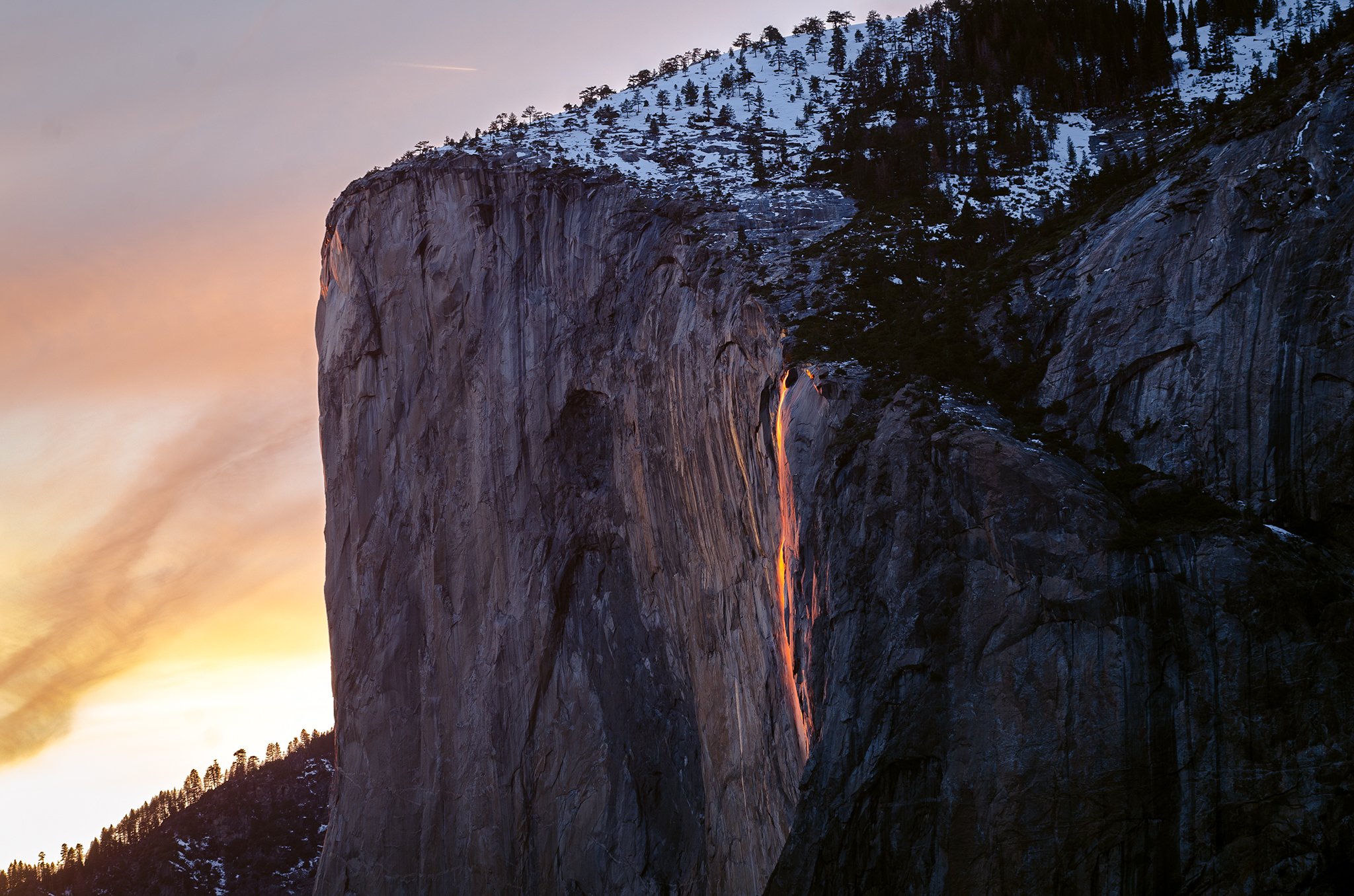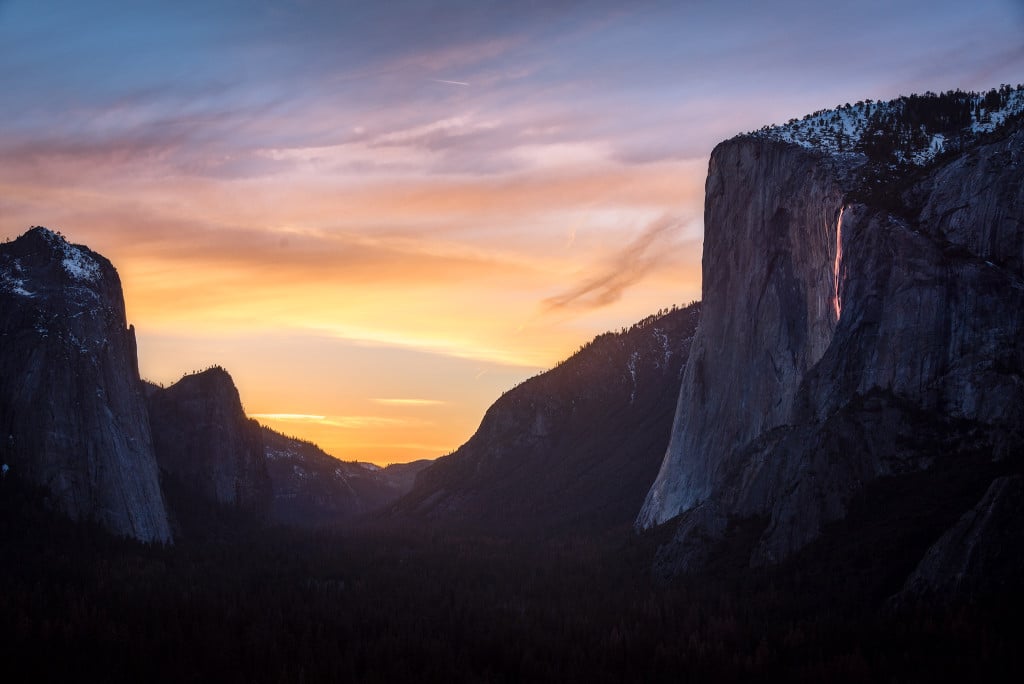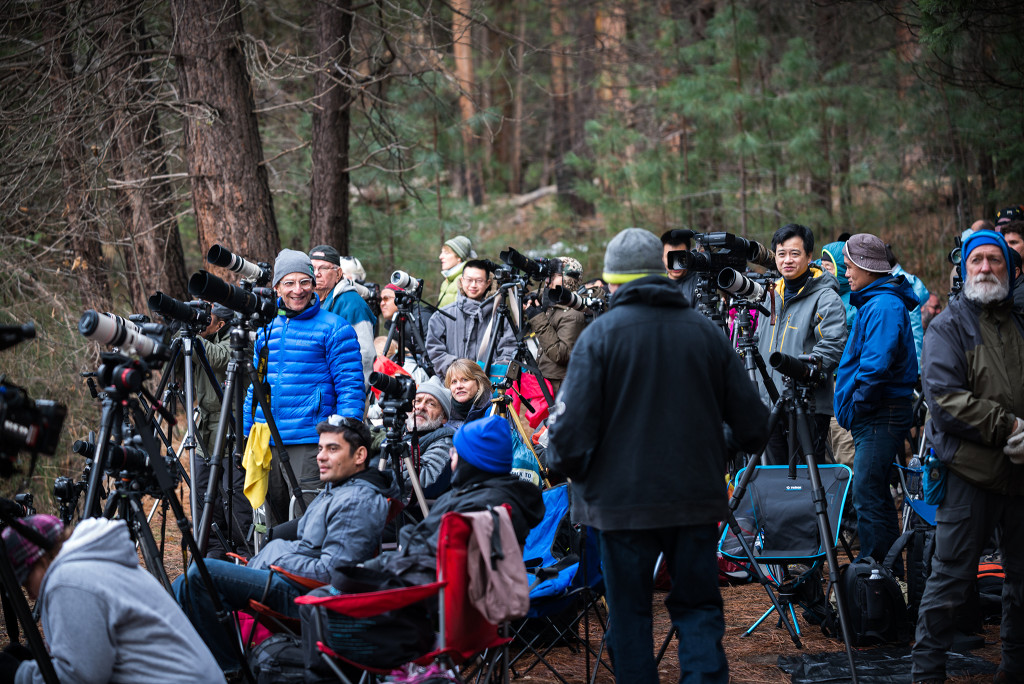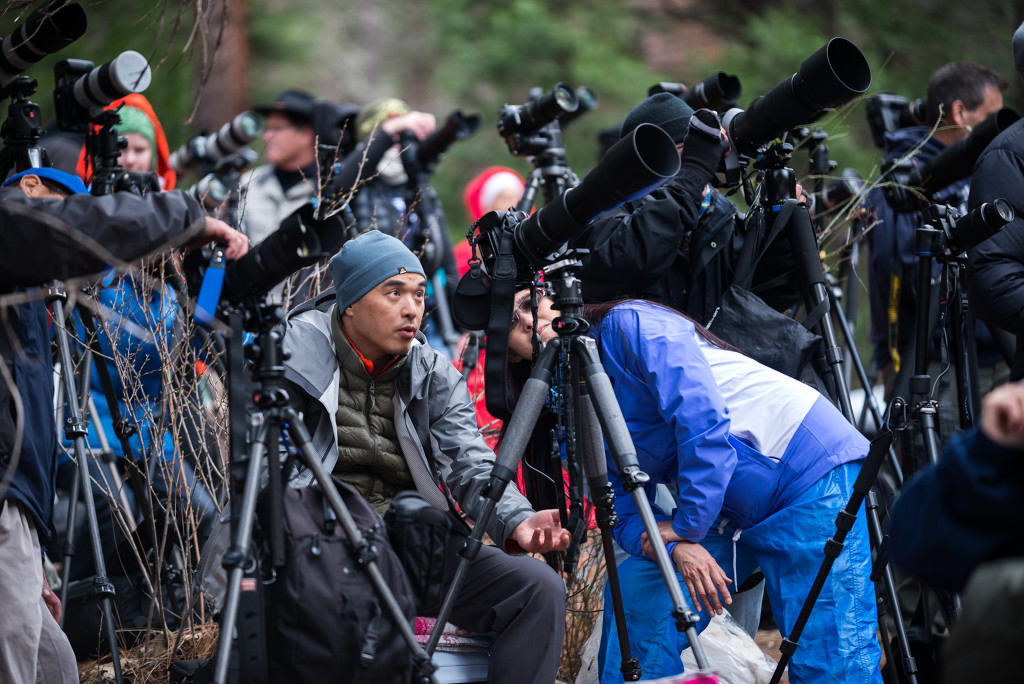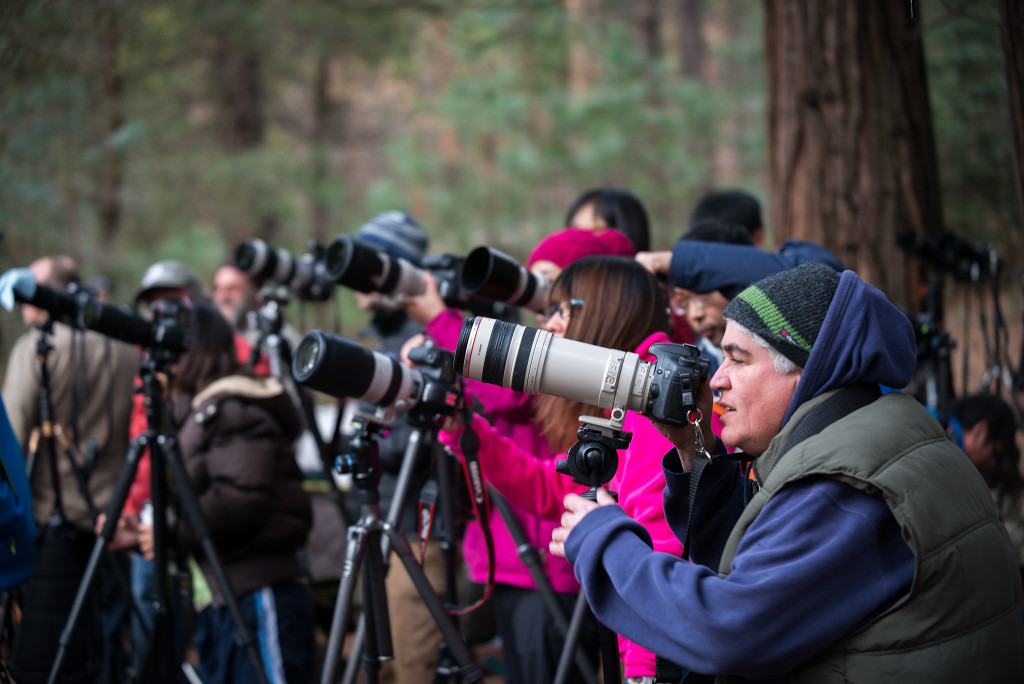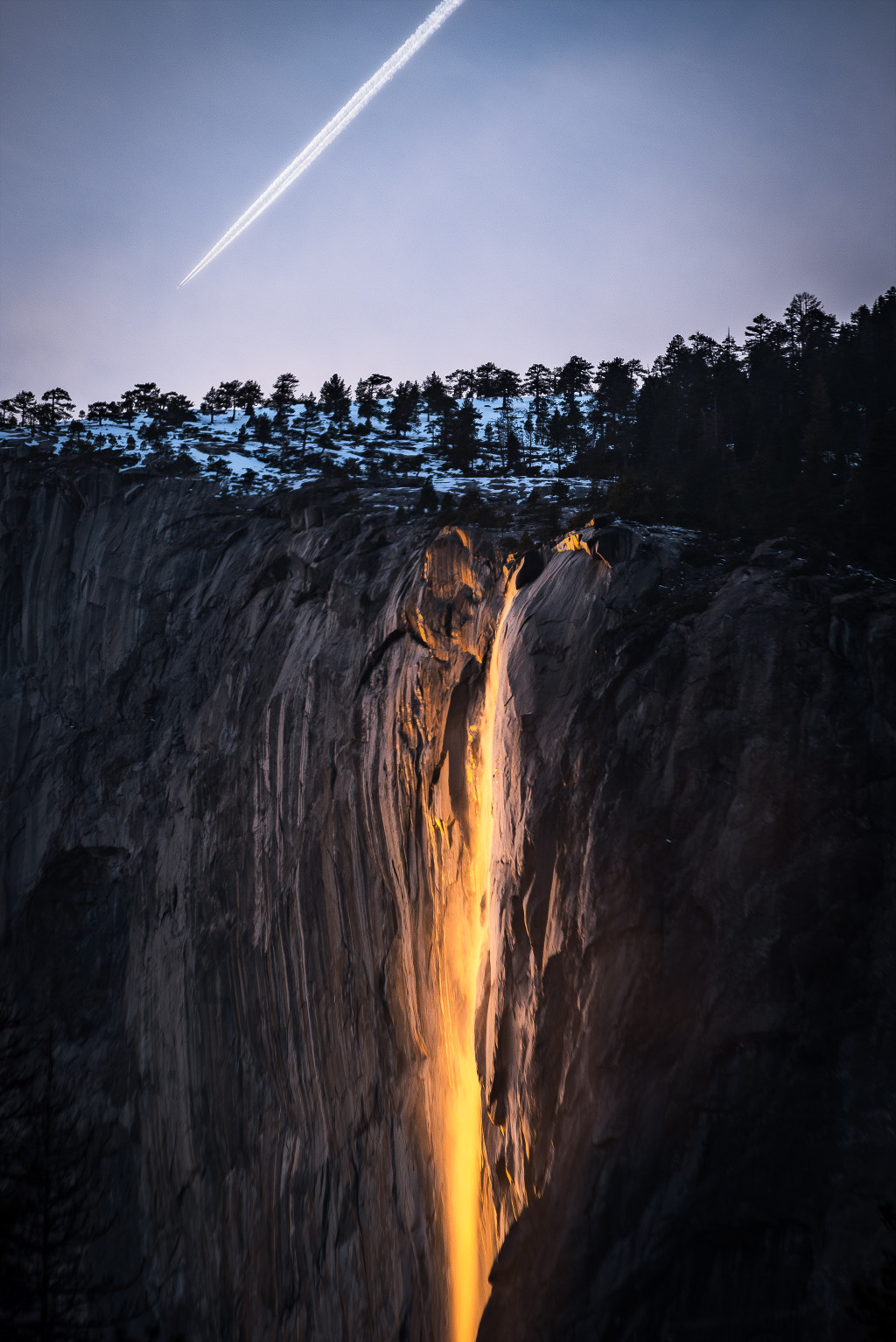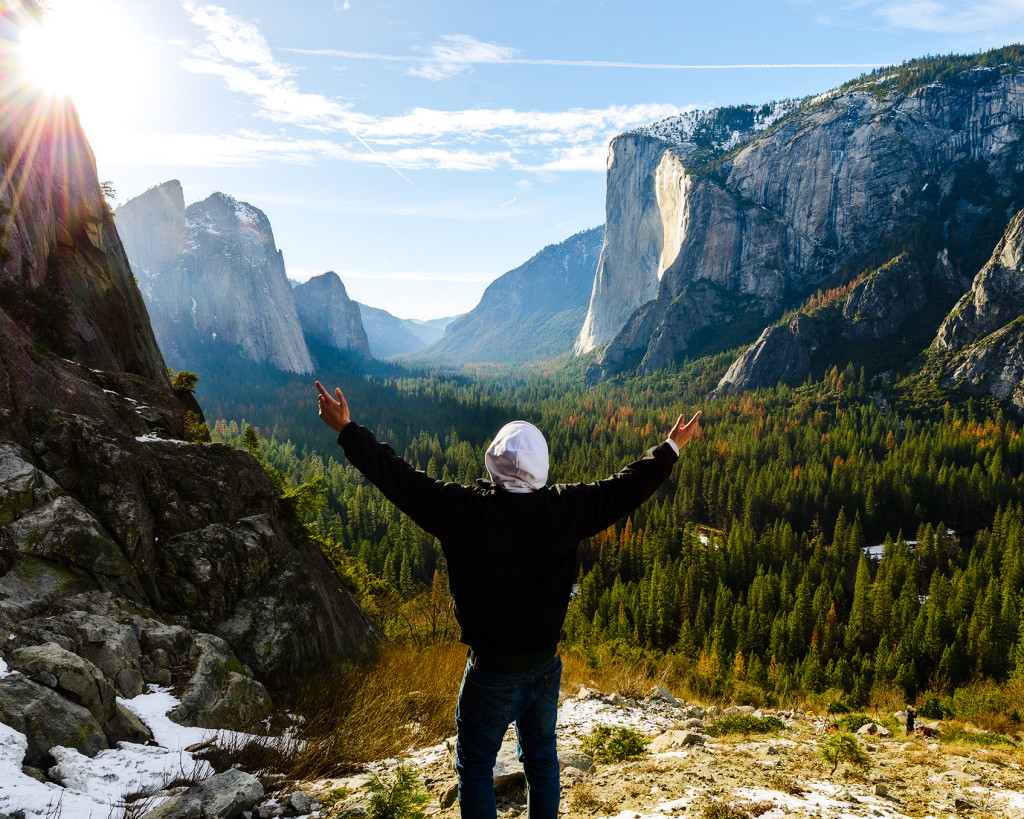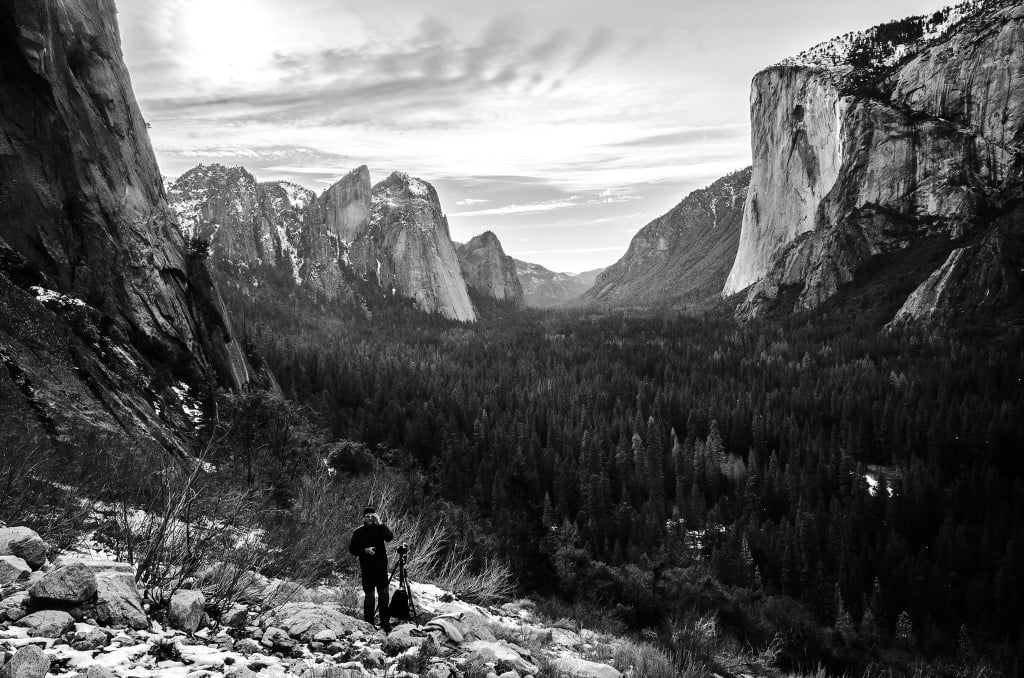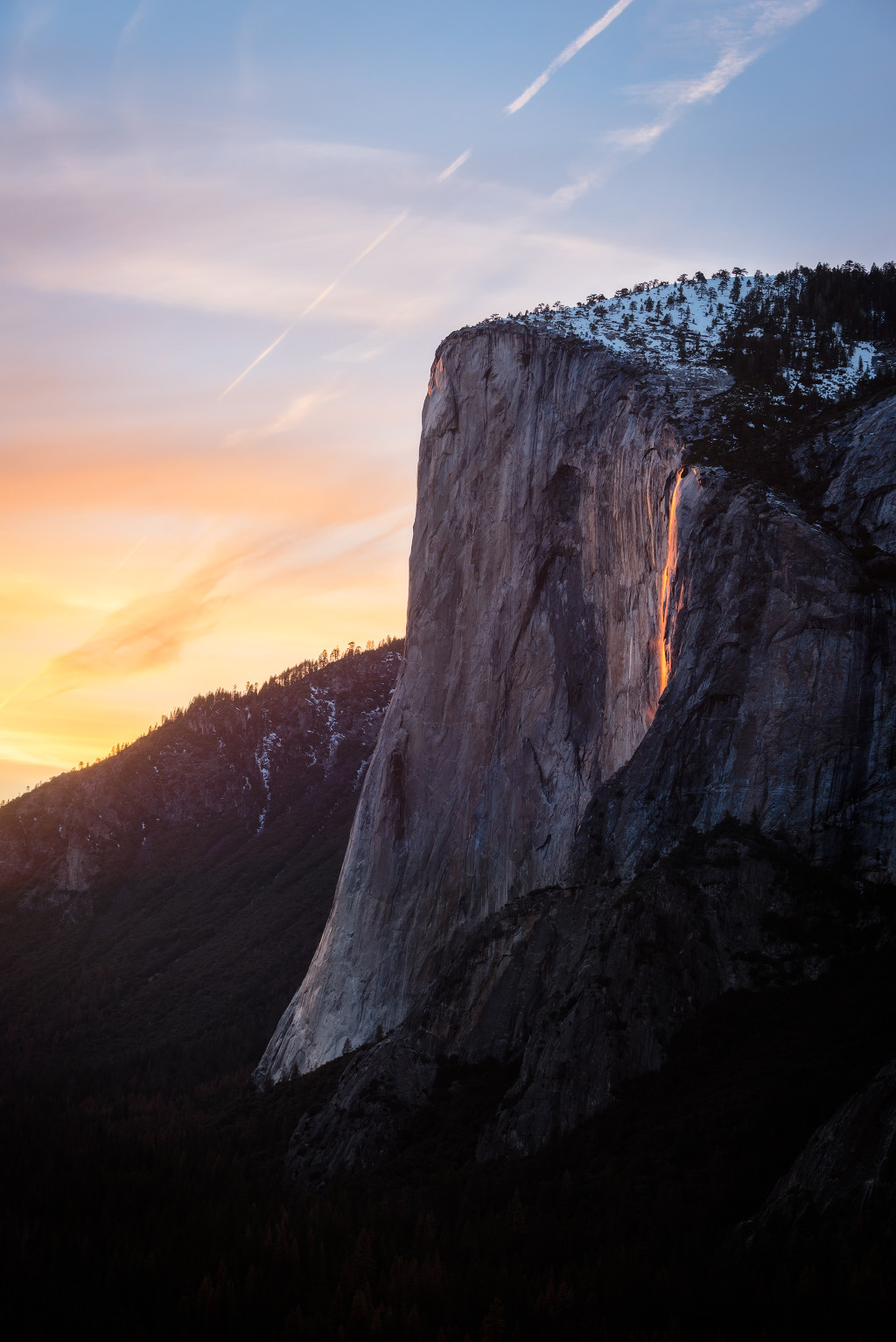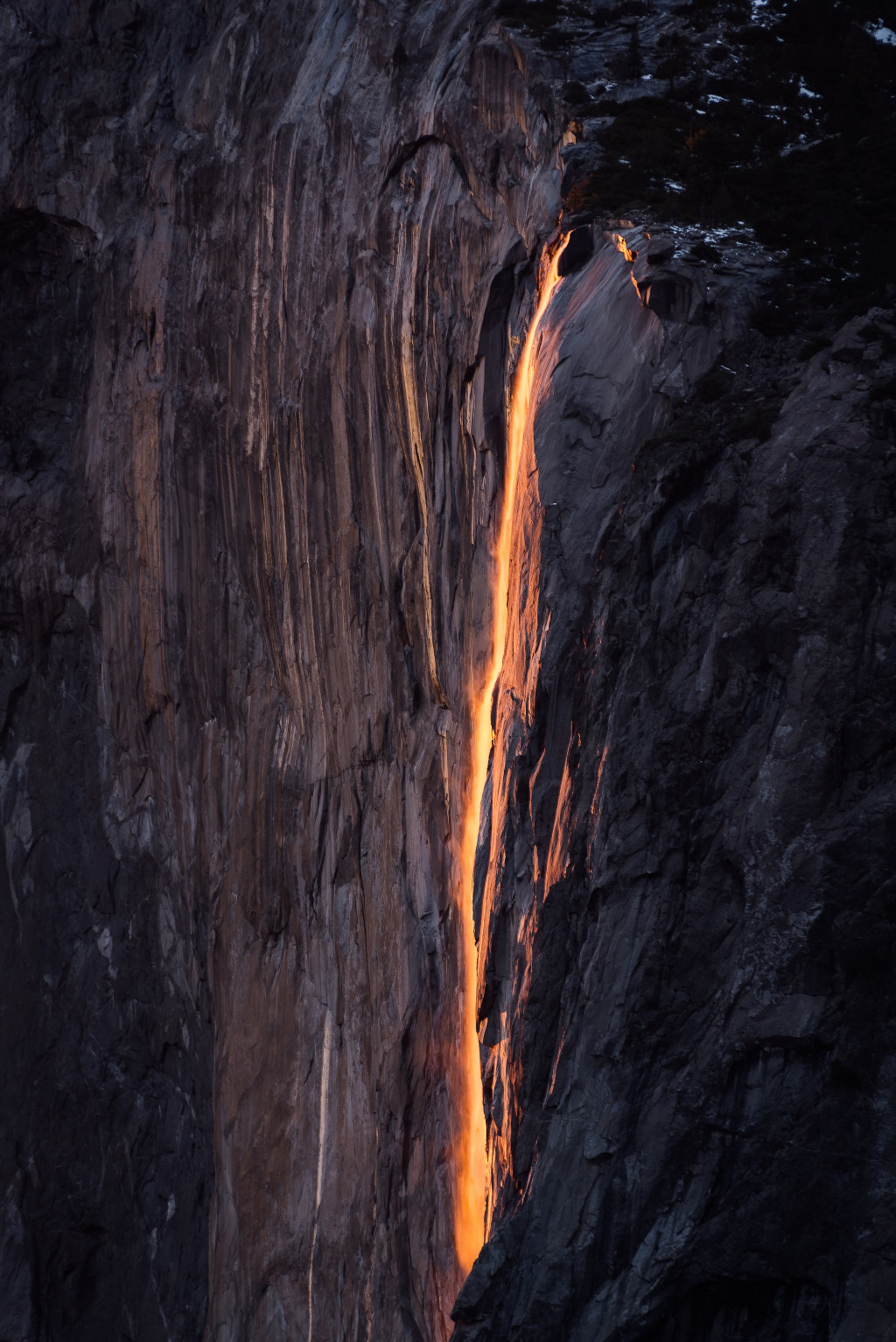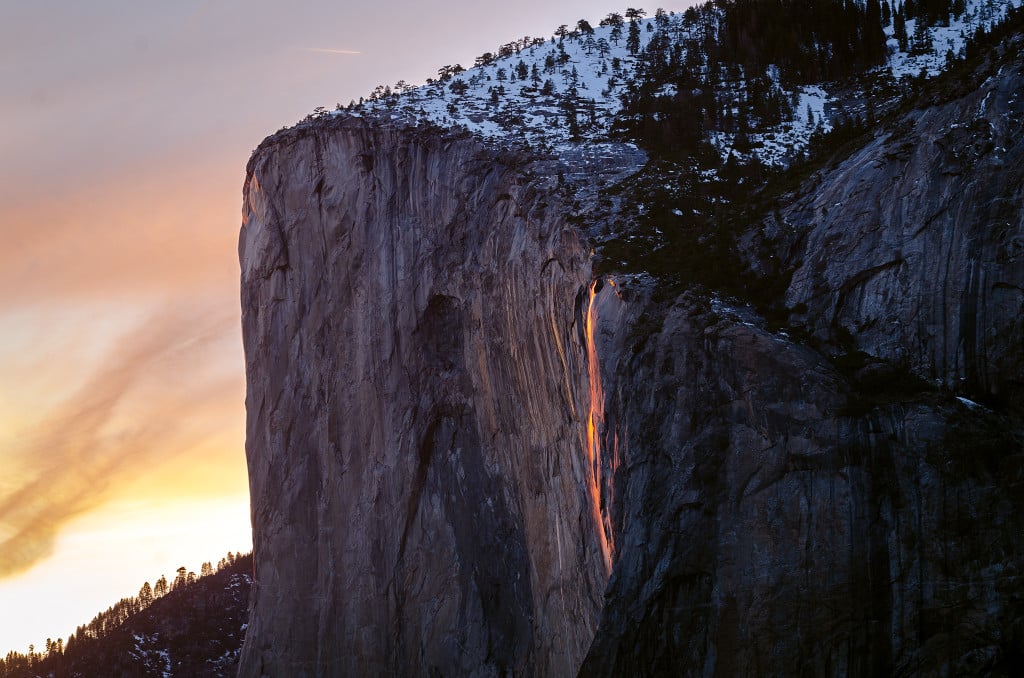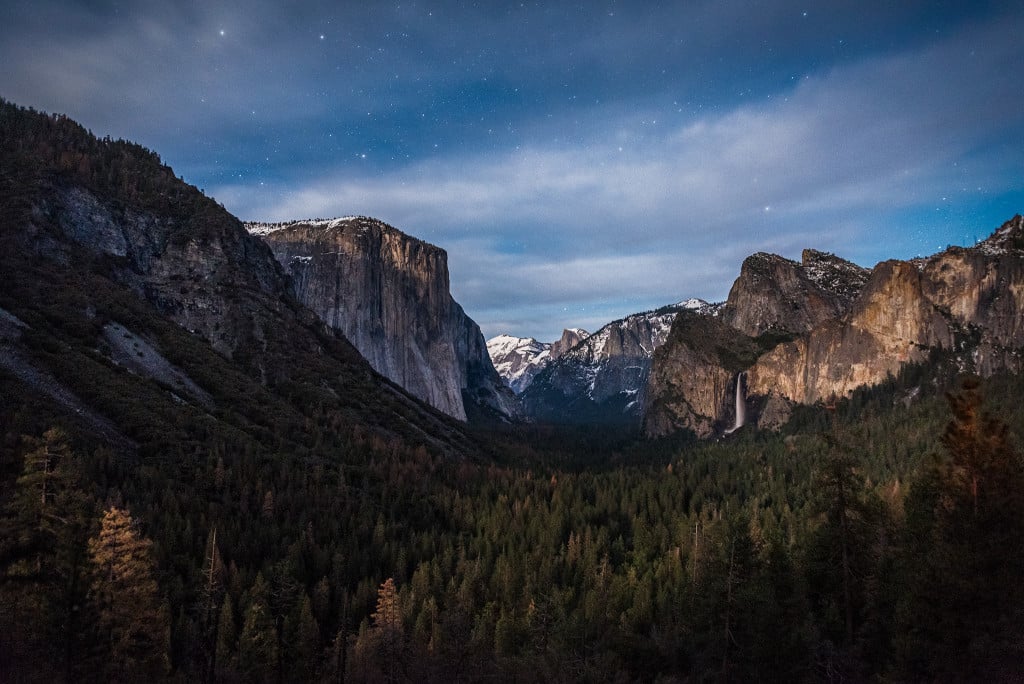Horsetail Fall is a small, seasonal waterfall located on the eastern side of El Capitan in Yosemite National Park. Despite it’s thin water flow, it drops an impressive 1,570 feet to the valley floor before merging with the Merced River below. In late February, the waterfall is known to become illuminated with deep shades of yellow, orange, and then red as the sun sets below the horizon. This impressive phenomenon, nicknamed “Firefall”, can only be seen if the conditions are perfect.

See Also – Taylor Gray: My Future is my Inspiration.
Some have tried to capture this event for over half a decade only to later go home empty handed. There are multiple elements that must come together in order for the waterfall to light up. Firstly, the fall will only light up during a small window of time – from around mid to late February. This is due to the ever-rotating direction of the sun. Secondly, there must be enough water flowing down Horsetail Fall. Without this element, the light will merely just light up the rock and the scene won’t be nearly as interesting. California has been in a historic drought for years, so Firefall hasn’t exactly been exceptional in quite a while. Luckily, there had been a decent amount of snowfall in Yosemite this year, so it didn’t look like that was going to be a problem. Next, the sky in the west must be clear of clouds. Even if the clouds are thin enough for the sun to get through, the light will be weaker therefore making the glow on Horsetail less prominent as well. Lastly, you must be in a certain location for it to be seen correctly. For most natural phenomena, perspective is key. For example, a solar eclipse can only be seen in certain parts of the world due to the angle and position of the sun and moon. The same concept goes for Horsetail Fall. If you were to try and photograph the event head-on with the Firefall directly above you, it would not seem as dramatic as if you were to view it from further south. This is due to the combination of the way the sunlight hits that rock face and the angle from which you view the waterfall.
Because the event only happens once a year, photographers come in droves to view and photograph this special occasion, which makes Yosemite very, very busy. Each year, Horsetail draws more and more visitors from all around the world. A half a century ago, only a select few knew about the spectacle. It wasn’t until 1973, when Galen Rowell photographed the Firefall in color, that it picked up attention from others around the globe. This year, more than 1,000 people have come to witness the Firefall during its two-week window and that number is sure to grow in the coming years.
When my group and I arrived last Friday morning, my initial plan was to scout the location that I would be taking my photos from and come back later in the day as it got closer to sunset. However when I got to the area, as many as fifteen photographers were already lined up, with their lenses pointed at El Capitan like tiny pieces of artillery.
The area I was in is called Southside Drive, a small clearing alongside the Merced River. As I stood on the river bank, I saw that there were a multitude of tree branches obscuring the view of the fall. I realized that finding an ideal vantage point was going to be harder than I thought. The best spots were filling up quickly and it was only 10:30 AM! I have been going to Yosemite in February for the past three years to specifically try and capture this event. Unfortunately, California’s drought has taken its toll on Horsetail Fall and the fall has either been a trickle of water or completely dried up for the past six years. But this year, the water was flowing well and I wasn’t about to miss out on witnessing this rarity. My group and I made the decision to grab our spots, hunker down in our lawn chairs and hammocks, and wait for the show to start. For the next 7 hours, we socialized with other photographers, napped, and patiently waited….and waited…and waited.
At around 3:00 PM, the once deep blue sky paled, as clouds made their way over the valley. We all groaned, knowing that if these clouds didn’t clear up, we would go home with nothing. By this time, there were over 150 photographers lined up behind us, all hoping to get the same thing as the person next to them. It occurred to me that this was all a bit ridiculous. There’s wasn’t much of a creative process happening in this situation, just a crowd of photographers with expensive camera equipment lining up to more or less get the same shot. I wanted to find a unique way to capture the fall that would get me away from the crowd, but more on that later.
At the moment, the clouds had cleared up enough for the sun to cast a warm, golden light on Horsetail. It was starting. A surprising quietness came across the crowd, as everyone intensely concentrated on trying to capture the scene in front of them. The sound of camera shutters opening and closing again and again was deafening. The waterfall slowly turned from a light yellow to a dark shade of orange. Some people were commenting on how the color was not as bright as it should be. They were right. As Horsetail kept turning darker shades of color, the light was getting steadily dimmer. Something was clearly wrong. The fall should have eventually turned to deep red as it reflected the sun’s afterglow, but as we all soon found out, that wouldn’t happen. A few clouds had snuck their way in front of the sun and prevented any more light from lighting up the fall. It was hard to not feel disappointed after spending the whole day camped out on a patch of open dirt, only to be sent away without a satisfying image of the event.
I only had one day left in Yosemite before I had to go back to school the following Monday, so I was committed to capturing the Firefall. There was no telling when the phenomenon would happen again, so I had to get the shot the next evening. The next day was also Ansel Adam’s birthday, a landscape photography pioneer who beautifully captured many national parks around the United States in stunning black and white photographs, so I thought it would be cool if I could get a good shot in his honor, in the National Park best known through his incredible photographs.
When my group arrived at the same location the next morning, we all felt a tinge of dread as we set up our gear in our desired spots. Spending another full day sitting around on our butts for the next eight hours did not sound appealing. After socializing with the people around us for a while, I met up with a talented photographer who I had been following on social media for some time but had never met, and we shared our desire to try and find a unique angle for photographing Horsetail.
After some research and a whole lot of bushwhacking, we eventually found an area that very few people knew about. We could hardly contain our excitement at our discovery and shouted a victory cry that echoed across the valley. The scene had a clear view of the waterfall as well as the skies in the west.
By the time we hauled all of our gear to this new location, the sky had become dull and overcast. The sun was just barely visible as it struggled to break through the dense clouds. I had a sinking feeling that I would end up with worse results than yesterday, as there was absolutely no light in the valley. I had a sliver of hope, however, when I saw a thin patch of blue sky in the west. The blue sky seemed to be taking over as the clouds were pushed to the east. The only problem was that the clouds were moving very, very slowly. With two and a half hours left until the waterfall was illuminated, I tried my best to gauge if the clouds would clear up in time for the Firefall to start. It looked promising, but if there is one thing I’ve learned from all of my time in Yosemite is that the weather can be very unpredictable. As the peak time grew closer, the anticipation of my group built. Finally the clouds managed to clear up 20 minutes before the Firefall was supposed to start and the light was back. I watched in amazement as Horsetail Fall once again began its multicolored process. This time, the color was brighter and more vibrant than the previous night. A colorful sunset was the cherry on top to a long, and tiring, but successful, day. Our group was very emotional because after three years, and only 8 hours of sleep for the entire weekend, we finally got the shots we had envisioned in our minds for so long. We let out long cheers across the valley which were returned by the crowd at Southside Drive shortly after.
Today, the image of the Firefall is still burned into my mind and is even more incredible to witness in person than I had expected. Yosemite National Park is one of those places that you can never get tired of no matter how many times you visit. If you ever get a chance to visit this amazing and diverse park in late February, the Firefall is a must-see!
Five Tips for Photographing the Firefall
Get there early!
If you are photographing the fall from either Southside Drive or the El Capitan Picnic Area – the most popular viewing locations – get there earlier than you’d expect! Parking can be a nightmare with the massive number of visitors that descend on Yosemite during this time, so parking spots can fill up very quickly.
Don’t Leave early, either
I can’t tell you how many people left as soon as the “last light” faded from the falls. This, in fact, was not the last light, but the beginning of the afterglow caused by the reflection of the setting sun. This stage of the Firefall is where you can see the deep reds and oranges so be sure to stick around for at least 10-15 minutes after sunset.
Bring a tripod
If you are shooting the waterfall with a telephoto zoom lens, you will definitely want to use a tripod to reduce any shaking of your camera. Some of my images were shot at around 1/10 of a second, which isn’t ideal for handheld. A shutter release cable is also a good idea to help reduce camera shake and will help produce clean and sharp images.
Watch the weather
It’s good to check the weather forecasts before planning a trip to photograph the Firefall. Also, be sure to check if Horsetail Fall is even flowing. There is about a two-week window in which you can capture the Firefall, so if the weather does not look ideal, don’t give up. There are plenty of interesting things to see in Yosemite so maybe focus on other aspects of the park while you are waiting for the weather to clear up.
Enjoy what you are witnessing
Firefall in Yosemite is one of the most awe-inspiring sites you will ever see, and will make you appreciate the beauty that is contained in our National Parks. It will be a frantic couple of minutes while you try to get that perfect photo, but try to take a couple of minutes, take your finger off the shutter, and just enjoy the beauty of Yosemite National Park.
Also, I was lucky enough to capture the Firefall on Friday and Saturday night through two different time lapses that I made. Make sure to check it out below!

See Also – Taylor Gray: My Future is my Inspiration.
Read Taylor Gray’s previous article on Resource Travel which talks about his photography inspiration. Also to see more from Taylor Gray, follow him on Instagram at @taylorgrayphoto or on his website.
